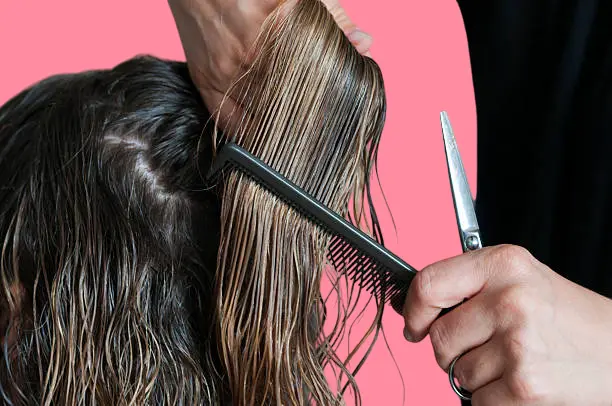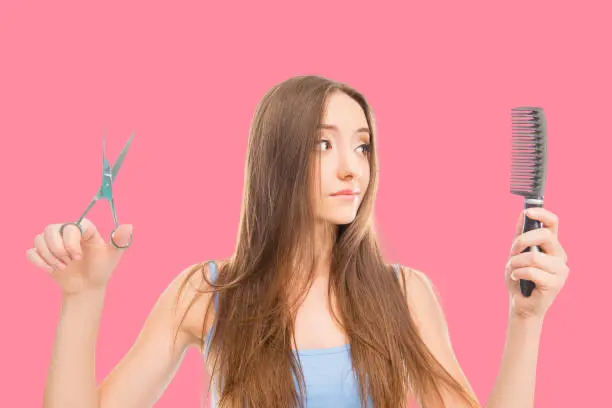Trimming the ends of your hair is an essential step for maintaining healthy, vibrant hair.
It helps eliminate split ends and gives your hair a thicker, shinier appearance. However, this simple step can cause hair damage if performed incorrectly.
First: Using the wrong tools
Using the wrong tools can damage the ends rather than improve them:
- Using kitchen scissors or tools not designed for hair.
- Dull blades can cause split ends.
- Neglecting to sterilize scissors before use.
Second: Cutting hair while it's completely wet

Cutting hair while wet changes its actual length after it dries:
- Wet hair expands, resulting in more hair being cut than intended.
- It's best to cut it while it's semi-dry to accurately estimate the length.
- Except for curly hair, which may require a different cut.
Third: Not Parting Your Hair Evenly
Disorganized cutting can cause obvious unevenness at the ends:
- It's recommended to part your hair into small, even sections.
- Use a comb to define the cutting lines.
- Ensure even lengths after completion.
Fourth: Cutting a large amount of hair
Rushing through a cut can lead to unwanted loss of length:
- It is preferable to cut a small amount first and then adjust as needed.
- Use the gradual cutting method to achieve the desired shape.
- Check the length after each step.
Fifth: Ignoring hair type when cutting
Each hair type has different needs when cutting:
- Curly hair requires special techniques to distribute length evenly.
- Fine hair requires precise angles to avoid gaps.
- Consider density and texture before starting.
Sixth: Cutting ends without considering the direction of hair growth
Cutting against the direction of hair growth can damage the ends:
- The direction of hair growth must be determined and cut in harmony with it.
- This helps reduce split ends and maintain smoothness.
Seventh: Ignoring hair styling before cutting

Cutting hair without combing it thoroughly can lead to inconsistent results:
- It is preferable to completely detangle before cutting.
- Use a brush appropriate for your hair type.
- Ensure hair is evenly distributed on both sides.
Eighth: Not Determining the Purpose of the Cut Before Starting
A lack of clarity about the goal leads to unsatisfactory results:
- Is the goal just to eliminate split ends or to change the shape?
- Precisely determine the desired length.
- Use a rearview mirror to observe the overall length.
Frequently Asked Questions About Trimming Haircuts
How often is it recommended to trim hair ends?
It is recommended to trim every 6 to 8 weeks to maintain healthy ends.
Does trimming hair ends make hair grow faster?
It does not actually increase growth, but it prevents split ends, which hinders a healthy appearance.
Is it possible to trim ends at home?
Yes, provided you use clean, sharp tools and follow precise steps.
What is the difference between trimming and trimming?
Trimming removes a significant portion of length, while trimming focuses on removing damage only.
Article Summary
Trimming hair ends is a necessary step to maintain healthy and beautiful hair, but it requires precision and knowledge of cutting basics to avoid mistakes that could lead to adverse results.
Paying attention to the tools, cutting method, and hair type helps achieve an elegant and vibrant look without the need to visit the salon frequently.